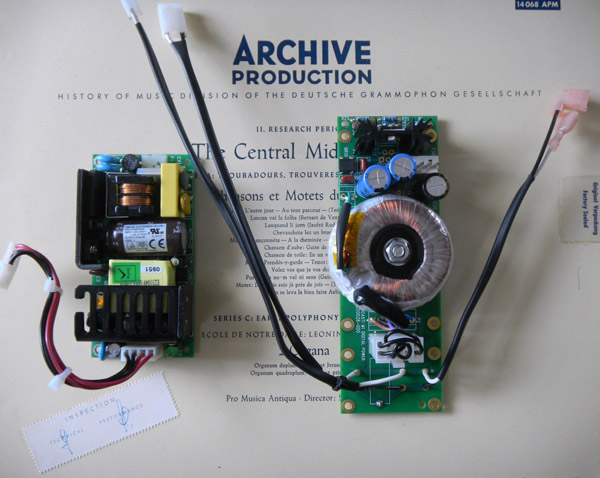| Columns Retired Columns & Blogs |
Hi there John,
Thanks for another informative and thorough review. I've turned to computer audio, or as it is also called, desktop audio. This is mainly to economize space and of course money. I have recently acquired a pair of Beyerdynamic T1s to upgrade from my AKG K702s, and I would also like to find a good headphone amplifier that can deliver what it takes to make these 600Ohm babies sound their best.
I have been doing some online window shopping and research, and I have come across at least 4 very intersting Amps that according to their specs could do a very good job with the T1s, and which have still to be featured at Stereophile. Two of them feature DA converters that also have impressive specs.
The first candidates are German made Violectric V100 and V200, which can be obtained with built-in 16/48 or 24/96 DA converters via USB. Violectric also features a standalone DAC, the V800, which is a very versatile unit with some really serious specs. They are all very fairly priced and fabulously well built, and only with German components and labor.
http://www.violectric.de/Pages/en/products/index.php
The second candidate is both a headphone Amp and pre-amplifier. It's Headamp's GS-1, which is also a very well built Amp with great specs and fully manufactured in the US.
http://www.headamp.com/home_amps/gs1/index.htm
The third candidate is the D2 DAC -and also headphone amplifier- by Anedio, which features some really fantastically good and detailed specs.
http://www.anedio.com/index.php/audio/gandalf
I have read your reviews of Benchmark Media's USB DAC1 Pre, Grace Design's m903 and CEntrance's Dacmini CX, which are all great products, but I would still love to see any of these other components, which also feature great specs and appear to equal or challenge the DAC 1, m903 and Dacmini CX's performance.
In the case that these components are not within near future review plans, I would still appreciate any impressions you could have on them. Thanks in advance for your help,
Greetings,
Erranti







































